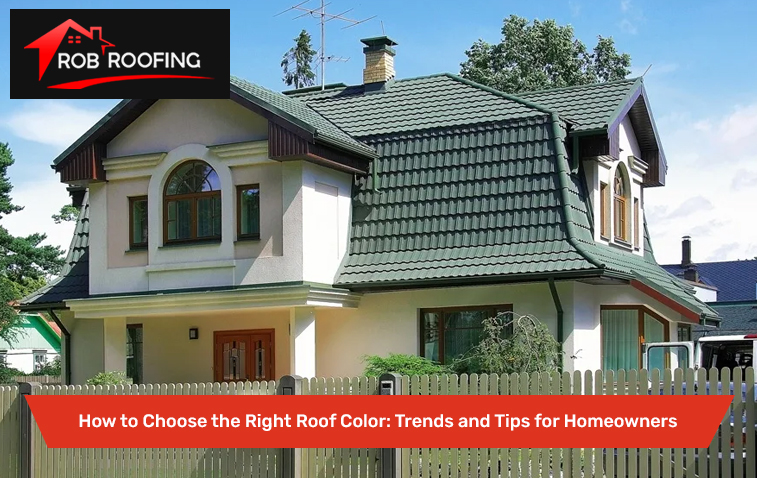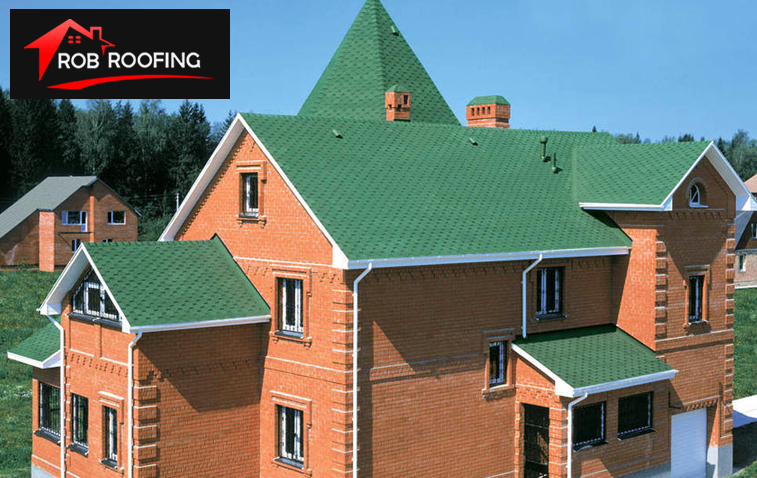How to Choose the Right Roof Color: Trends and Tips for Homeowners
Choosing a new roof can feel like a big decision. After all, your roof protects your whole house! One important choice is the color of your roof. The right color can make your house look great and even help save energy. Therefore, you will learn everything you need to know to make a great decision.
Roof Color Trends
Here are few popular roof color trends you might see:
1. Classic Gray
Gray roofs are very popular. They look good on many different styles of houses. Also, gray is a neutral color, so it goes well with many other colors. For instance, a gray roof looks great with white, blue, or even red siding. Additionally, gray roofs can give your house a timeless and elegant look. Moreover, they are a safe and stylish choice.
Furthermore, light gray roofs can reflect sunlight. This can help keep your house cooler in warm weather. Similarly, darker gray roofs can absorb more heat, which might be helpful in colder climates. Therefore, gray is a practical choice as well as a fashionable one.
2. Warm Brown
Brown roofs are another classic choice. They give a warm and inviting feel to a house. In addition, brown roofs often look great in wooded areas or on houses with earth-toned siding. For example, a brown roof can complement brick or stone exteriors beautifully.
Besides, brown roofs can make a house feel cozy and comfortable. Moreover, they remind people of nature and natural materials. Thus, brown is a popular choice for many homeowners.
3. Cool Black
Black roofs are becoming more and more popular. They give a modern and sophisticated look to a house. Also, black roofs can make a bold statement. For example, a black roof can look stunning on a contemporary house with light-colored siding.
However, black roofs absorb a lot of heat. This can make your house hotter in warm climates. Therefore, if you live in a hot area, you might want to consider a lighter color. Nevertheless, in cooler climates, a black roof can help keep your house warm.
4. Natural Green
Green roofs are a unique and eco-friendly choice. They often use special materials that support plant growth. Also, green roofs can help reduce stormwater runoff and improve air quality. For instance, they can blend in beautifully with natural surroundings.
Additionally, green roofs can provide extra insulation for your house. This can help save energy on heating and cooling costs. Moreover, they offer a beautiful and natural look. Thus, they are a great choice for environmentally conscious homeowners.
5. Bold Blue
Blue roofs are less common but can add a lot of personality to a house. They can create a calm and peaceful feeling. For example, a light blue roof can look great on a beach house. Furthermore, a darker blue roof can add a touch of drama.
Besides, blue roofs can complement houses with white or light-colored siding. Moreover, they can make your house stand out from the neighborhood. Consequently, they are a great choice for those who want to be different.
Tips for Homeowners
Here are few helpful tips to consider when choosing your roof color:
1. Consider Your Home’s Style
The style of your house should influence your roof color choice. For example, a traditional house might look best with a classic gray or brown roof. Additionally, a modern house might look great with a black or gray roof.
Furthermore, think about the architectural details of your house. Moreover, consider the shape and size of your roof. Thus, you can choose a color that complements the overall design.
2. Think About Your Home’s Siding and Trim
Your roof color should work well with the other colors of your house. For instance, if you have white siding, almost any roof color will look good. Besides, if you have brick siding, a brown or gray roof might be a good choice.
Moreover, consider the color of your trim, doors, and windows. Thus, you can create a cohesive and harmonious look.
3. Factor in Your Climate
The climate where you live can affect your roof color choice. For example, if you live in a hot climate, a lighter-colored roof will reflect sunlight and keep your house cooler. Additionally, if you live in a cold climate, a darker-colored roof will absorb heat and help keep your house warmer.
Furthermore, consider the amount of sunlight your house receives. Moreover, think about the typical weather conditions in your area. Therefore, you can choose a color that is both beautiful and practical.
4. Look at Your Neighborhood
It is a good idea to look at the other houses in your neighborhood. You do not want your house to clash with the surrounding homes. For instance, if most of the houses in your neighborhood have gray roofs, you might want to consider a similar color.
Besides, you can choose a color that complements the overall look of the neighborhood. Moreover, you can make your house stand out in a good way.

5. Get Samples and Test Them Out
Before you make a final decision, get samples of different roof colors. Then, look at the samples at different times of the day. For example, the color might look different in the morning sun than it does in the afternoon shade.
Additionally, you can hold the samples up against your house to see how they look with your siding and trim. Moreover, you can get a better sense of how the color will look on your roof.
